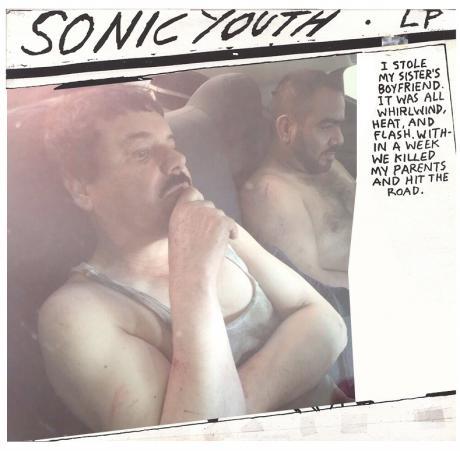
Daniela Franco on Meme Theft and Homicidal Adolescents on the Run
I.
Let me start by confessing that I am not entirely sure what a meme actually is. I don’t know how far removed the word as used in Internet culture is from Richard Dawkins’ original concept of cultural genetics. Is a meme an original unit that mutates slightly as it is propagated, like the subtitle parodies of the scene in Hitler’s bunker from Downfall? Or is it the original unit unvaried, but with a new claim of authorship at every reproduction? Either way, what is the ultimate aim of a meme?
Meme theft is common in Mexico: someone with few Twitter followers comes up with a witty image-text combination, only to have it retweeted and reclaimed by a mainstream “social entertainment company,” then indignantly re-reclaimed by a third party as his or her own creation. I can (roughly) understand how a media company monetizes thousands of retweets, but what’s in it for the regular meme appropriationist? Has a meme ever made a commoner rich or popular? More often than not, a meme’s authorship is seemingly devoured by its own virality.
Also common in Mexico’s conservative literary scene is plagiarist hunting. Every suspected writer is a plagiarist until proven an appropriationist, his work scrutinized until the origin of his dubiously authored quotes is found. Ostensibly the Internet reverses this witch-hunt process, thanks to altruistic meme-dissection websites like Know Your Meme. But who would want to know the real author of a meme anyway? Who is interested in the origin of the image or its original context? For all Mexicans care, this bewhiskered chub is just some sarcastic Mexican office worker, not Neil deGrasse Tyson.
The redundancy of the notion of authorship paired with diligent manual (digital) labor that has no purpose but entertaining the masses: it could be said that a meme, in the age of viral reproduction, is the quintessential act of appropriationism, the epitome of uncreative creation. Yet in experimental writing appropriationism often comes signed, and in contemporary art it often comes with a profit. An Internet meme is like a Richard Prince giving his work away for free.
Yes, most likely I am missing the point entirely. Imagine my surprise, then, to discover myself as a meme generator.
II.
A few minutes after photos of the (most recent) capture of Joaquín “El Chapo” Guzmán were published on Twitter, the artist Cuauhtémoc Padilla (@cupagu) posted a side-by-side image of the photo of El Chapo and his sidekick El Cholo inside a car and the cover of Sonic Youth’s 1990 album Goo...
You have reached your article limit
Sign up for a digital subscription and continue reading all new issues, plus our entire archives, for just $1.50/month.
Already a subscriber? Sign in




